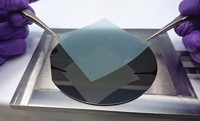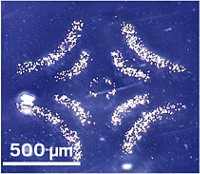Advertisement
Grab your lab coat. Let's get started
Welcome!
Welcome!
Create an account below to get 6 C&EN articles per month, receive newsletters and more - all free.
It seems this is your first time logging in online. Please enter the following information to continue.
As an ACS member you automatically get access to this site. All we need is few more details to create your reading experience.
Not you? Sign in with a different account.
Not you? Sign in with a different account.
ERROR 1
ERROR 1
ERROR 2
ERROR 2
ERROR 2
ERROR 2
ERROR 2
Password and Confirm password must match.
If you have an ACS member number, please enter it here so we can link this account to your membership. (optional)
ERROR 2
ACS values your privacy. By submitting your information, you are gaining access to C&EN and subscribing to our weekly newsletter. We use the information you provide to make your reading experience better, and we will never sell your data to third party members.
2-D Materials
Method irons out 2-D materials for computer chips
Technique delicately transfers large sheets of ultrathin films
by Katherine Bourzac
December 16, 2018
| A version of this story appeared in
Volume 96, Issue 49

Two-dimensional electronic materials could be key ingredients in future energy-efficient computer chips—if engineers can learn to build devices with them. On Dec. 4 at the International Electron Devices Meeting in San Francisco, researchers from the Belgian semiconductor research company Imec presented a method for making and transferring smooth, high-quality sheets of tungsten disulfide and other 2-D materials. Devices with 2-D materials have been made in the lab but they tend to be one-offs. “We’re always limited by the precision of lab tools,” says Imec device physicist Iuliana Radu. Her team sought a way to transfer large sheets of 2-D materials from the surface on which they are grown, to the surface of a silicon wafer patterned with electronic circuits, without wrinkling the 2-D material or melting the underlying silicon devices. They grew a WS2 film, 0.7 nm thick and 300 mm in diameter, on a silicon wafer. They attached the film to a glass carrier with proprietary adhesives and transferred it to the destination wafer, using lasers to melt the adhesives. The material can then be patterned to make large arrays of transistors whose performance is comparable to those made one at a time using more artisanal lab methods. These techniques work with other 2-D materials as well, Radu says.





Join the conversation
Contact the reporter
Submit a Letter to the Editor for publication
Engage with us on Twitter